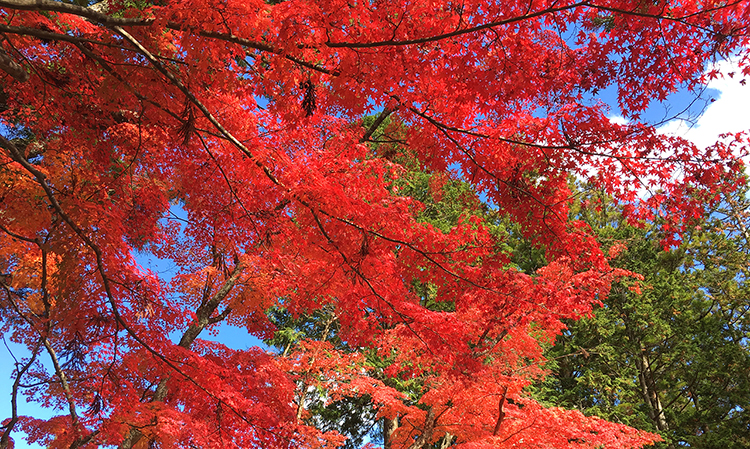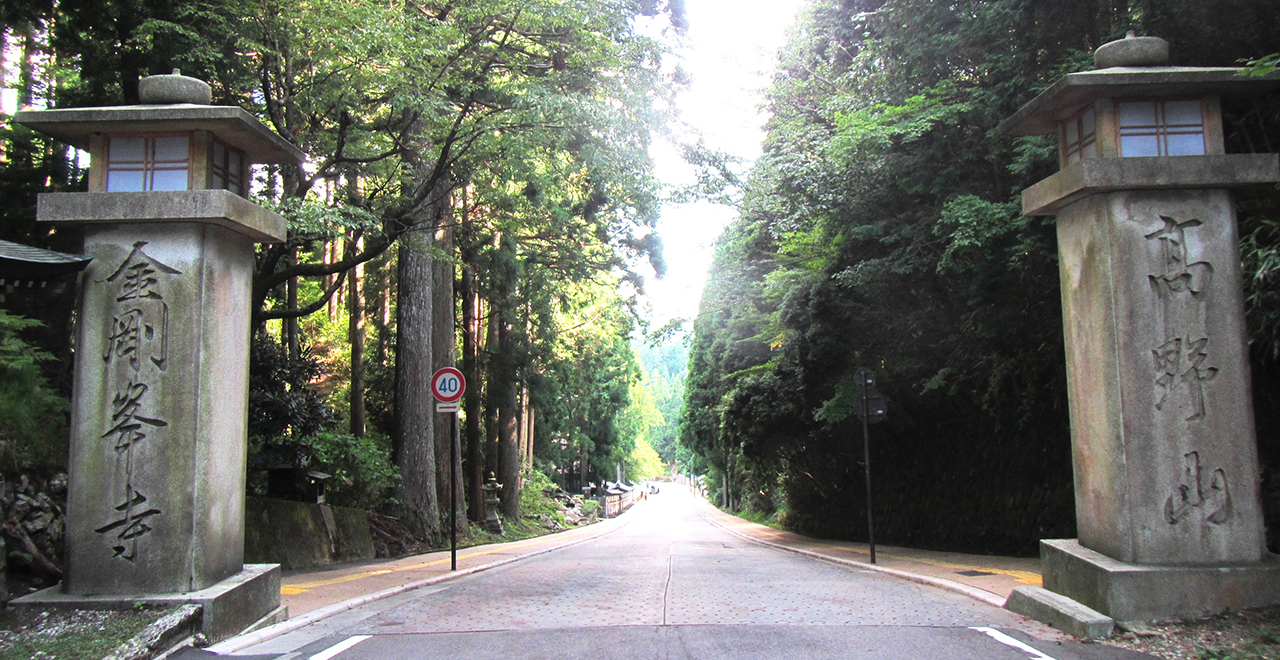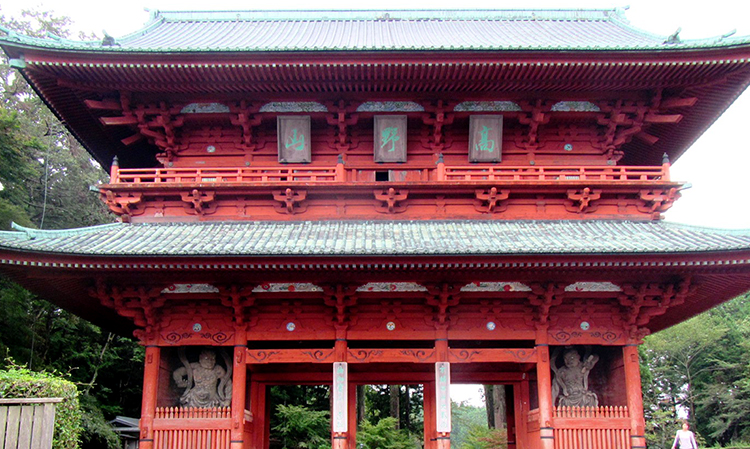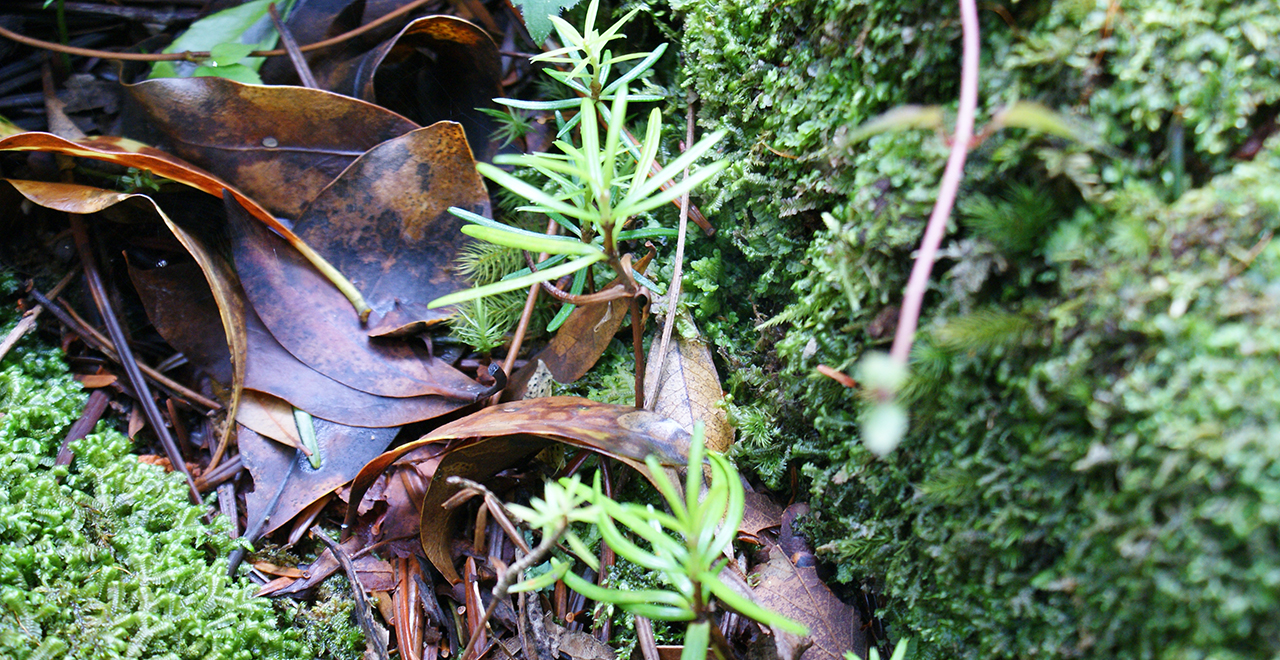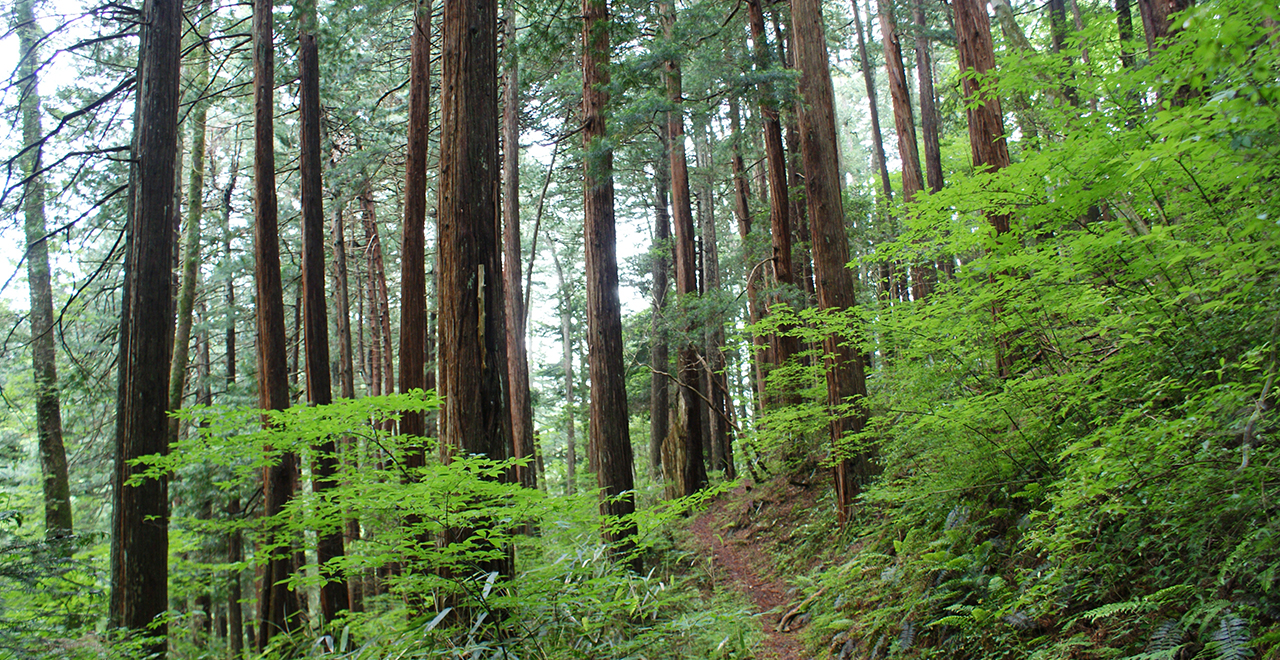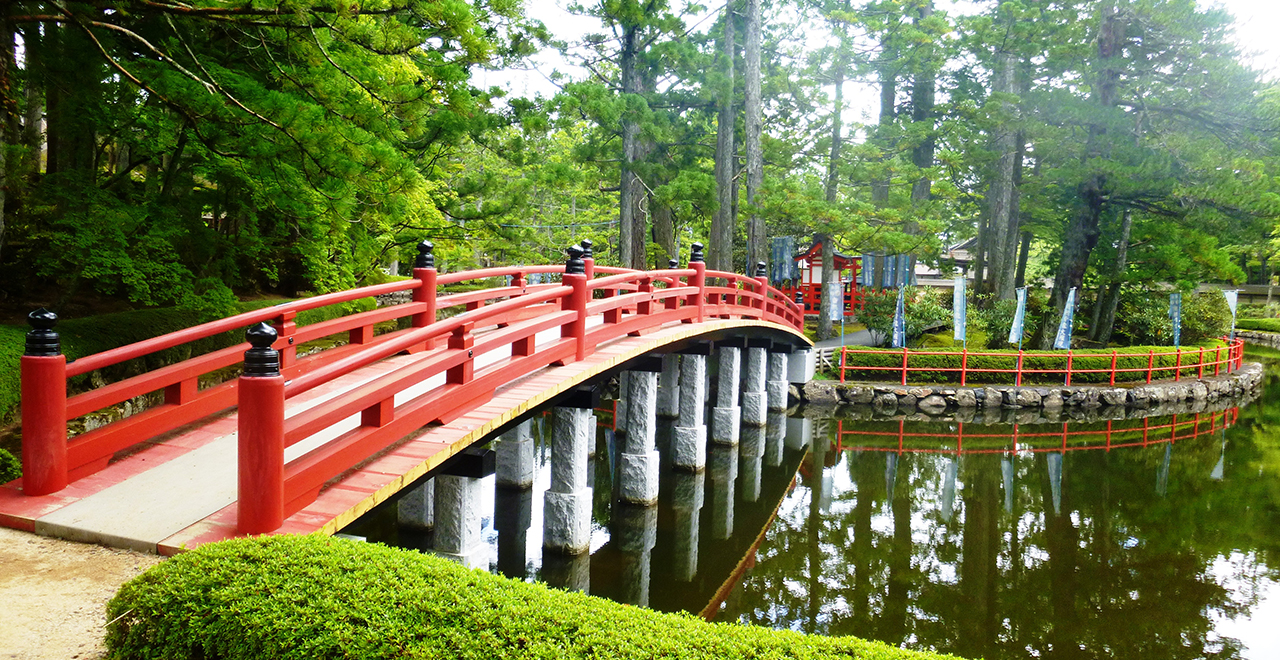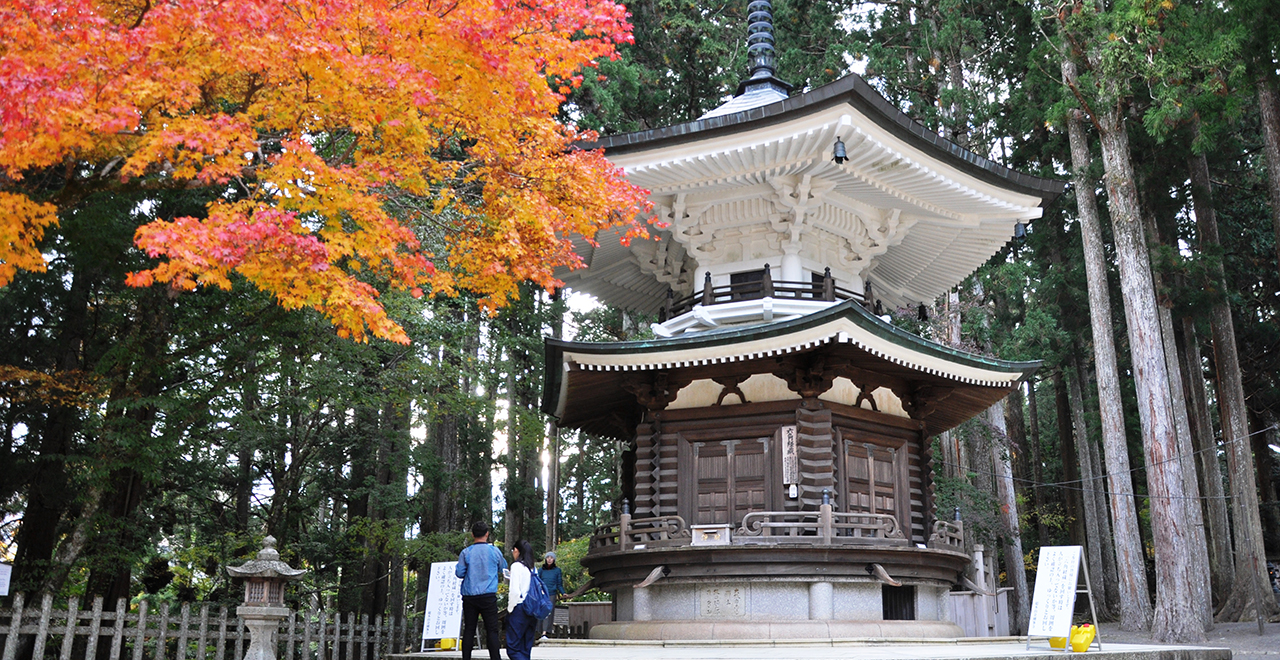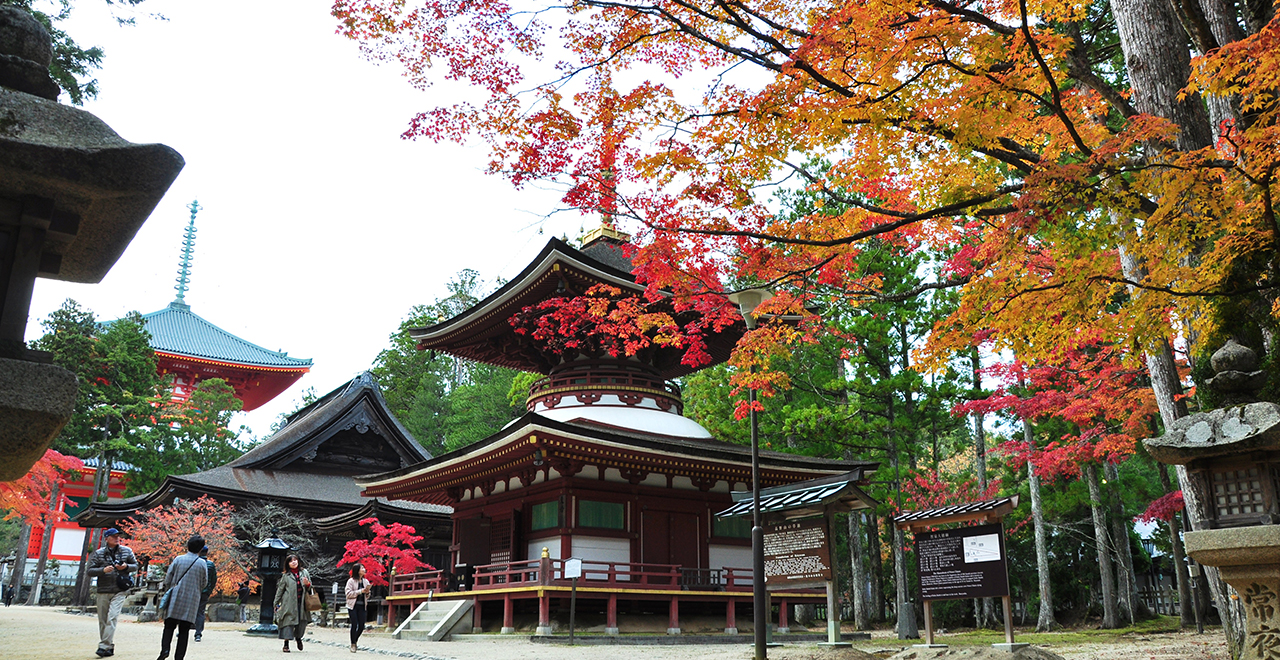Koyasan (Mount Koya) Recreation Forest
25.09ha
Elevation Lowest : 580m / Average : 700–740m / Highest : 740m
Forest on the sacred Koyasan plateau
Forest on the sacred Koyasan plateau
- Newest information
- Area
- Activities
- Overview
- Latest Information
- Usage Guide
- Facility
- Map
- Address
- Access
(Distances and times are
provided as a guide only) - Management office
contact details - Information on Other Local
Tourist Attractions - Official Tourist Information
- Recreation Forest
Management Committee - Supporters
- Other
- Newest information
- Gathering information in advance is important to safely enjoy forest recreation that brings you closer to nature.
・CHECK
・When you go out, please check local tourist and related information and gather information on road closures, weather conditions, etc.
- Area
- Kinki Chugoku
- Activities
- Autumn leaf viewing (Outside the forest) Picnics (lawn area/park) (Outside the forest) : Koya Town Sports Field Guided tours (Outside the forest) (Foreign language support available (Payment required in some cases)) Forest therapy (therapy center) (Outside the forest) : Mezame no Morizukuri Executive Committee (Payment required for use of facilities and participation in activities) (Foreign language interpretation available (advance request required) (Payment required)) Shrine / Temple visit (Outside the forest) : Entire Koyasan (Payment required in some cases)
- Overview
-
- Geographical/topographical features
- The forest is located on Koyasan, a flat area with an elevation of approximately 800 m surrounded by over-1,000 m mountains, in Koya Town, Ito County, in northern Wakayama Prefecture.
The name Koyasan (literally, "Mt. Koya") gives the impression of a mountain peak. However, Koyasan is in fact a flat basin 6 km from east to west and 3 km from north to south. - Historical/cultural features
- Koyasan, where the Koyasan (Mount Koya) Recreation Forest is located, is a sacred site for the esoteric Buddhist Shingon sect, which was started by the priest Kukai, also known as Kobo Daishi, at the beginning of the Heian period (8th century CE). It is a unique religious site without parallel anywhere else in Japan, and is the location of more than 100 temples.
In 2004, Koyasan was registered as a UNESCO Cultural World Heritage site as part of the "Sacred Sites and Pilgrimage Routes in the Kii Mountain Range." In addition, it marked the 1200th anniversary of its foundation in 2015. Koyasan has become an international tourist spot and receives large numbers of both domestic and international visitors. - Climate, flora and fauna
- Although Koyasan is located in Wakayama Prefecture, which generally has a temperate climate, the seasons there arrive earlier than in the rest of the prefecture, and the temperature tends to be low throughout the year due to the area’s elevation of approximately 800 m.
Construction of temples required long, thick logs because the buildings were tall and the rooms were wide. Therefore, the so-called six tree species of Koyasan (Sugi (Japanese cedar (Cryptomeria japonica)), Hinoki (Japanese cypress (Chamaecyparis obtusa)), Akamatsu (Japanese red pine (Pinus densiflora)), Momi (fir (Abies firma)), Koyamaki (Japanese umbrella pine (Sciadopitys verticillata (Thunb.) Siebold et Zucc.)), and Tsuga (Japanese hemlock (Tsuga sieboldii))) were planted because they are appropriate for the climate and useful as timber. The current magnificent scenery is considered to be a result of the mountain forest system established in the mid-Edo period (late 17th to early 18th century CE). The trees―particularly Japanese cypress and Japanese umbrella pine―were protected, and logging of the six tree species for uses other than temple repairs was banned in 1813.
In Koyasan's protected forest of rare Japanese umbrella pine, located adjacent to the Recreation Forest, a mix of tree species have been cultivated, mainly consisting of the six tree species of Koyasan. This forest was designated as a protected forest in 1918, and has been managed as such ever since. - Attractions
- The Koyasan (Mount Koya) Recreation Forest forms part of the Koya-Ryujin Quasi-national Park. A natural forest and a planted forest of old conifers create superb scenery. The area can be entered from the walking trail adjacent to "Nyonindo." The beautiful conifer forest can be explored via the Forest Therapy Road, which runs through Koyasan's protected forest of rare Japanese umbrella pine. Relax and enjoy the rich natural splendor of Koyasan's unique natural environment.
The adjacent protected forest preserves a natural forest consisting of 130- to 290-year-old trees, including the six tree species of Koyasan, which are appropriate for this sacred site. You can feel the history of the religious town of Koyasan and the trees that supported its development.
- Latest Information
-
- Regular events
- Forest Therapy Road Tour (route through the protected forest of rare Japanese umbrella pine)
- Warnings (Flora and fauna)
- Asian black bear: Tsukinowaguma (Asian black bear (Ursus thibetanus)) may be present during the period from May to November. When entering the forest, please carry a bear bell and stay in a group. Check for local information on bear sightings and warnings and follow instructions.
- Usage Guide
-
- Entrance fee
- Free of charge
- Opening seasons and hours
- Accessible 24 hours a day
- Accommodation options
- 52 Koyasan temples can be used as Shukubo (temple lodging) (accommodations for worshippers). They all have their own histories and characteristics. Some are associated with famous samurai while others feature beautiful gardens and fusuma (sliding screen) paintings.
- Facility
- Toilets and drinking fountains (Outside the forest) : Town-operated toilet near Nyonindo Footpath / walking trail (Includes surrounding area) Parking lot (Outside the forest) : Municipal office parking lot, etc. Shop (Outside the forest) : In Koya Town Restaurant (Outside the forest) : In Koya Town Free public wireless LAN (Wi-Fi) (Outside the forest) : Available in some parts of Koya Town Resource center / Museum (Outside the forest) : Koyasan Reihokan Museum (Payment required for use of facilities and participation in activities) (Foreign language support available (Payment required)) World Heritage Site / Cultural Property (nationally designated) (Outside the forest) : Pilgrimage routes to Koyasan (Foreign language support available) Accommodation facilities (Hotels/Japanese inns) (Outside the forest) : Shukubo (temple lodging) available
- Map
- Address
- Koyasan National Forest, Koya Town, Ito County, Wakayama Prefecture
- Access
(Distances and times are provided as a guide only) -
- By public transport
-
<Access from nearest railway station / bus stop>
- ● Gokurakubashi Station (Nankai Electric Railway) → about 20 minutes on foot (1.5 km)
- ● Kongobuji-mae bus stop (Nankai Rinkan Bus) → about 38 minutes on foot (2.9 km) ※Via Nyonindo
<Access from major transport hubs to nearest railway station / bus stop>- ● JR Osaka Station → (JR Osaka Loop Line (change trains at Shin-imamiya Station) → (Limited Express Koya (Nankai Electric Railway): 100 minutes) → Gokurakubashi Station
- ● JR Osaka Station → (JR Osaka Loop Line (change trains at Shin-imamiya Station)) → (Limited Express Koya (Nankai Electric Railway) (change trains at Gokurakubashi Station): 110 minutes) → Koyasan Station (Nankai Rinkan Bus: 16 minutes) → Kongobuji-mae bus stop
- By car
-
<Access (From the Nara/Wakayama direction)>
- Keinawa Expressway Katsuragi-nisihi IC → (public road: about 45 minutes) → Daimon-Minami Parking Lot→ (about 6 minutes on foot)→ Daimon bus stop (Nankai Rinkan Bus: 6 minutes) → get off at the Kongobuji-mae bus stop
<Car parking capacity / parking charges>Free parking for 200 vehicles at the Daimon-Minami Parking Lot
- Nearby tourist facilities
-
- ● Nyonindo (the only remnant of a temple specifically for women existing in the Kyosan area from the time when women were forbidden to enter the area): 10 minutes on foot
- ● Kongobuji Temple (main temple of over 3,600 Koyasan Shingon sect temples nationwide): 20 minutes on foot
- ● Koyasan Reihokan Museum (stores and exhibits cultural properties, including 21 national treasures): 25 minutes on foot
- Management office contact details
-
Wakayama District Forest OfficeTEL:050-3160-6120
https://www.rinya.maff.go.jp/kinki/wakayama/
- Information on Other Local Tourist Attractions
-
Kongobuji Temple (main temple of the Koyasan Shingon sect) [External link]
- Official Tourist Information
-
Koya Town [External link]Koya Tourist Association [External link]
- Recreation Forest Management Committee
- ー
- Supporters
- ー
- Other
- ー






